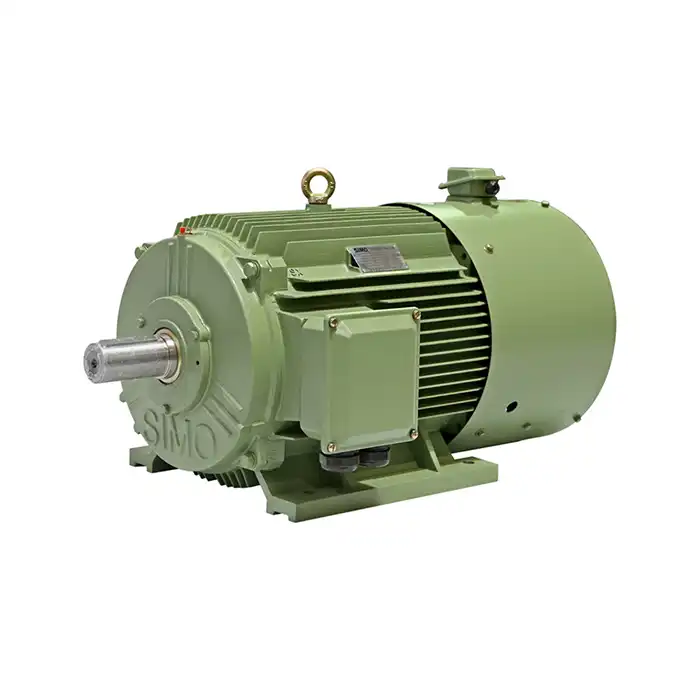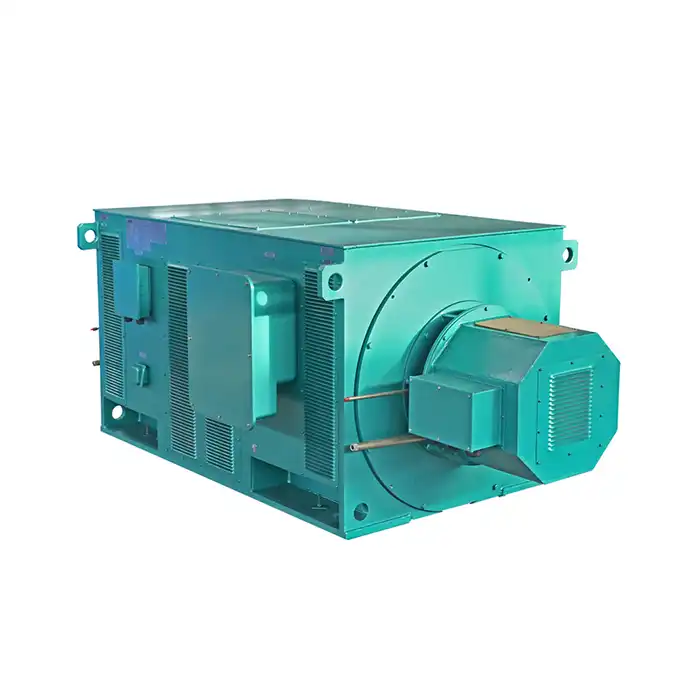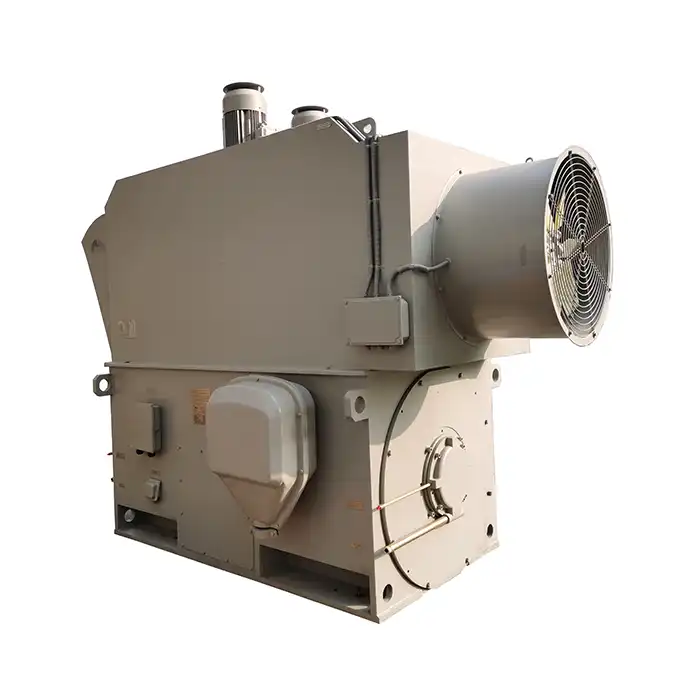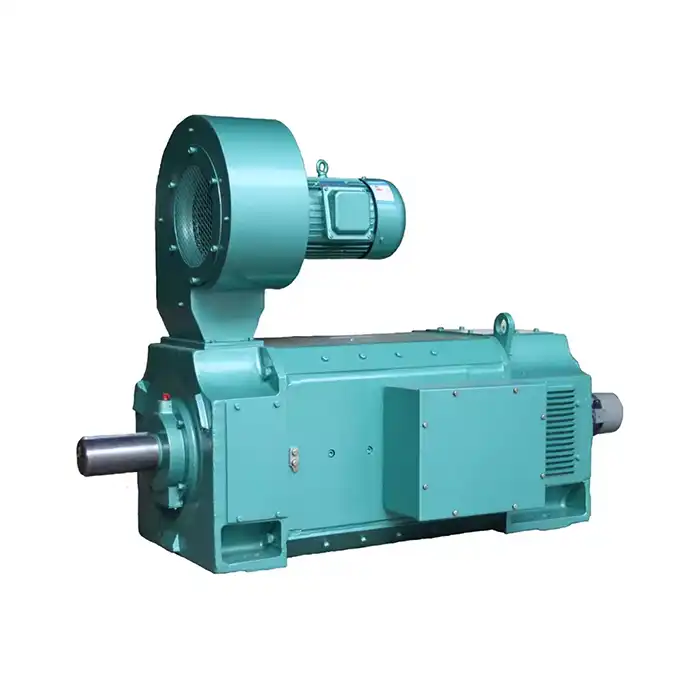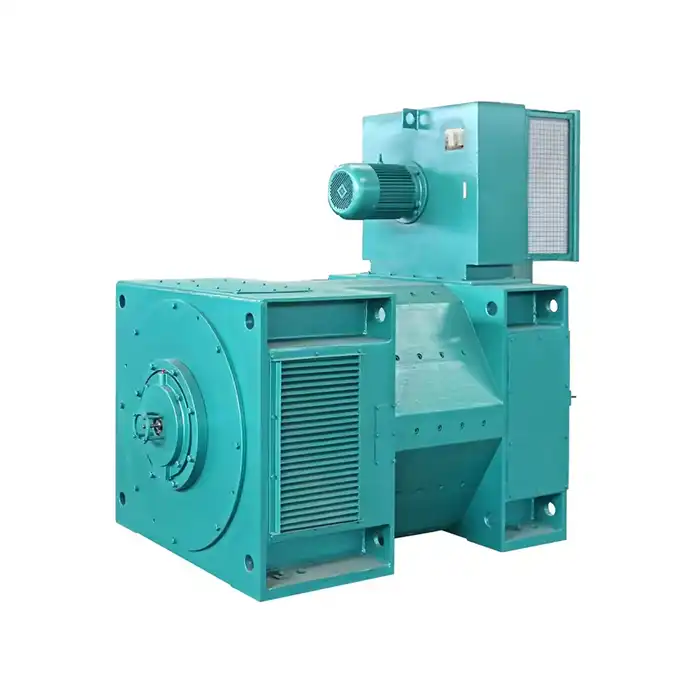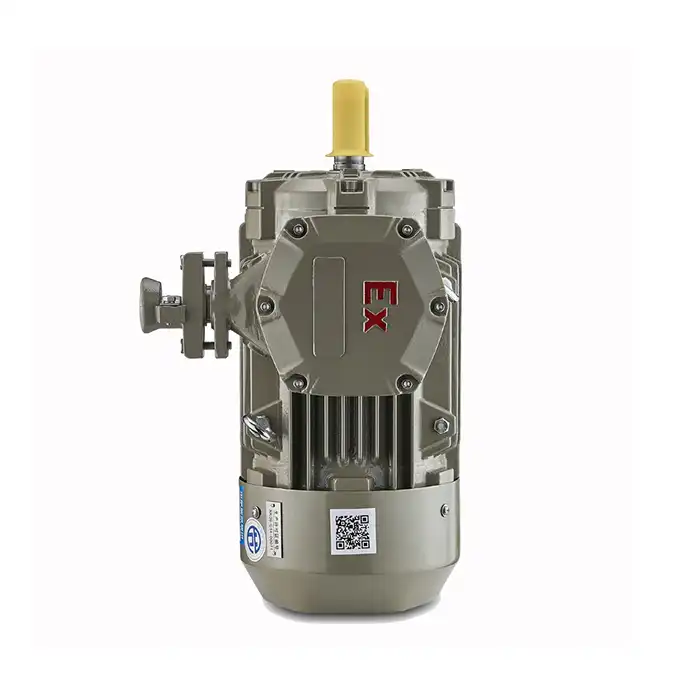Explosion Proof Brake Motors vs. Standard Motors: Key Differences
In industrial settings where safety is paramount, the choice between explosion proof brake motors and standard motors can be crucial. This article delves into the key differences between these two motor types, focusing on their performance, cost-effectiveness, and regulatory compliance. By understanding these distinctions, industry professionals can make informed decisions that prioritize both safety and efficiency in their operations.
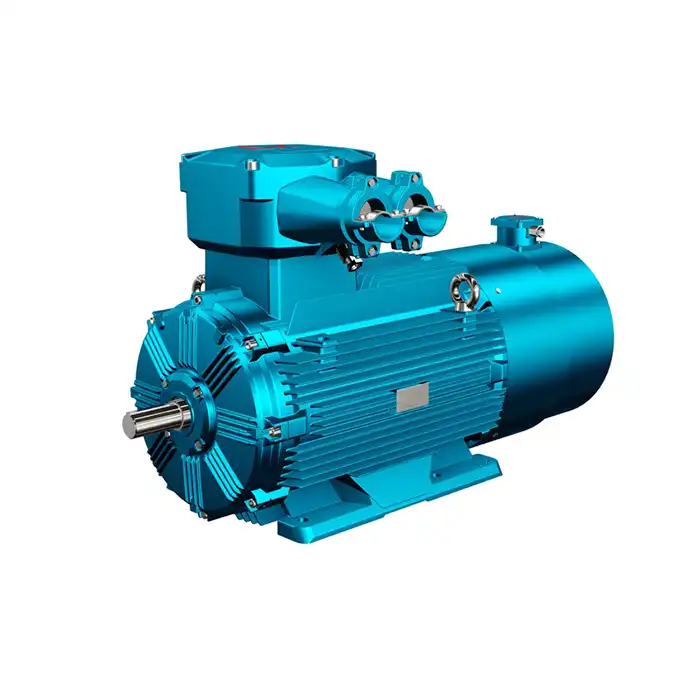
Series:YBBP
Voltage range:380V,660V,415V,380/660V,660/1140V
Power range:0.55-355 kW
Application:places where explosive gas mixtures exist in petroleum, chemical, mining, metallurgy, electric power, machinery and other industries.
Advantage: wide speed regulation range, fast dynamic response, high speed regulation accuracy.
Explosion-proof mark: Ex d I Mb, Ex d IIB T4 Gb, Ex d IIC T4 Gb
Others: SKF, NSK, FAG bearings can be replaced according to customer requirements.
Cost-Benefit Analysis for High-Risk Industries
When considering the implementation of the products versus standard motors in high-risk industries, a thorough cost-benefit analysis is essential. While the initial investment for the products may be higher, the long-term benefits often outweigh the costs, especially in environments where safety is a top priority.
Initial Investment Considerations
The upfront cost of the product is typically higher due to their specialized design and materials. These motors are engineered with robust enclosures and components that can withstand potentially explosive atmospheres. In contrast, standard motors are less expensive initially but may not provide the necessary safety features for hazardous environments.
Long-Term Operational Costs
When evaluating long-term operational costs, explosion proof brake motors often prove more economical in high-risk settings. Their durability and resistance to harsh conditions can result in reduced maintenance needs and longer lifespans. Standard motors, while cheaper upfront, may require more frequent replacements or repairs when used in challenging environments, leading to higher cumulative costs over time.
Safety and Risk Mitigation
The most significant benefit of explosion proof brake motors lies in their ability to mitigate risks in hazardous areas. By preventing the ignition of flammable gases or dust, these motors drastically reduce the potential for accidents, injuries, and property damage. The cost savings associated with improved safety, including lower insurance premiums and reduced downtime due to accidents, can be substantial.
Performance Comparison in Extreme Conditions
The performance of the products and standard motors can differ significantly when operating in extreme conditions. Understanding these disparities is crucial for industries that require reliable motor function in challenging environments.
Thermal Management
Explosion proof brake motors are designed to maintain lower surface temperatures, even under heavy loads. This feature is critical in environments where high temperatures could potentially ignite flammable substances. Standard motors, lacking this specialized thermal management, may overheat in similar conditions, posing a safety risk and potentially leading to motor failure.
Resistance to Corrosive Environments
Industries such as chemical processing and oil refineries often expose motors to corrosive substances. Explosion proof brake motors typically feature enhanced resistance to these corrosive elements, with specially treated materials and sealed designs. Standard motors may deteriorate more quickly in such environments, leading to reduced performance and shortened lifespan.
Operational Stability in Dusty Conditions
In environments with high levels of dust or particulate matter, such as mining operations or grain processing facilities, the products demonstrate superior performance. Their sealed construction prevents the ingress of dust, maintaining consistent operation and reducing the risk of motor damage or malfunction. Standard motors may struggle in these conditions, potentially leading to reduced efficiency or failure.
Regulatory Compliance: Standard vs. Explosion Proof
Adhering to regulatory standards is non-negotiable in industries where explosive atmospheres are a concern. The differences in compliance requirements between standard and explosion proof brake motors are significant and can impact a company's operational capabilities and legal standing.
International Standards and Certifications
Explosion proof brake motors must meet rigorous international standards to ensure their safety in hazardous environments. These standards, such as ATEX in Europe or Class and Division systems in North America, dictate specific design and testing requirements. Standard motors, while subject to their own set of regulations, do not typically meet these stringent explosion-proof certifications.
Installation and Maintenance Requirements
The installation and maintenance of explosion proof brake motors are subject to strict guidelines to maintain their safety features. This often involves specialized training for personnel and specific procedures for servicing and repairs. Standard motors generally have more flexible installation and maintenance requirements, which can be less demanding in terms of expertise and resources.
Documentation and Record-Keeping
Companies using the products must maintain detailed records of motor specifications, maintenance activities, and any modifications. This documentation is crucial for regulatory compliance and may be subject to inspection. While standard motors also require record-keeping, the level of detail and scrutiny is typically less intense.
Periodic Inspections and Certifications
Explosion proof brake motors often require regular inspections and recertifications to ensure they continue to meet safety standards. These inspections may need to be conducted by certified professionals and can be more frequent and thorough than those required for standard motors. This ongoing compliance process is essential for maintaining the integrity of safety systems in hazardous environments.
Operational Flexibility and Customization
When comparing explosion proof brake motors to standard motors, it's important to consider the differences in operational flexibility and customization options available for each type.
Adaptability to Varying Industrial Processes
Explosion proof brake motors are designed to operate safely in specific hazardous environments, which can limit their adaptability to different industrial processes. However, within their designated safety parameters, these motors can be highly customized to meet the unique needs of various applications in high-risk industries. Standard motors, while more versatile in terms of general application, may not be suitable for use in potentially explosive atmospheres without significant modifications.
Speed and Torque Control Options
Both explosion proof brake motors and standard motors can offer a range of speed and torque control options. However, the implementation of these controls in explosion proof motors must adhere to strict safety guidelines. This can sometimes result in more complex control systems for explosion proof motors compared to their standard counterparts. Despite this, modern explosion proof brake motors can achieve impressive levels of precision in speed and torque regulation, making them suitable for a wide array of industrial applications.
Integration with Automation Systems
The integration of motors with broader automation systems is a critical consideration in many industrial settings. Explosion proof brake motors can be successfully integrated into automated processes, but this integration must be carefully designed to maintain the integrity of the explosion-proof features. Standard motors may offer more straightforward integration options, but they lack the inherent safety features required in hazardous environments.
Environmental Impact and Sustainability
As industries increasingly focus on sustainability, the environmental impact of motor choices becomes an important factor in decision-making processes.
Material Usage and Recyclability
Explosion proof brake motors often require more materials in their construction due to their robust design and safety features. This can lead to a larger environmental footprint in terms of raw material usage. However, the durability and longevity of these motors can offset this initial impact over time. Standard motors typically use fewer materials but may need more frequent replacement in harsh environments. Both types of motors can be designed with recyclability in mind, but the specialized components in explosion proof motors may require more complex recycling processes.
Energy Consumption Patterns
The energy consumption patterns of explosion proof brake motors and standard motors can vary depending on their specific designs and applications. While both types can be engineered for energy efficiency, the additional safety features of explosion proof motors may sometimes result in slightly higher energy consumption. However, advancements in motor technology have significantly narrowed this gap, allowing the products to achieve competitive efficiency levels while maintaining their crucial safety characteristics.
Lifecycle Assessment
When conducting a lifecycle assessment, the products often demonstrate favorable long-term environmental impacts in high-risk industries. Their durability and resistance to extreme conditions can lead to extended operational lifespans, reducing the frequency of replacements and associated environmental costs. Standard motors may have a lower initial environmental impact but could require more frequent replacements in challenging environments, potentially resulting in a higher cumulative environmental cost over time.
Conclusion
The choice between explosion proof brake motors and standard motors is a critical decision that impacts safety, performance, and compliance in industrial settings. While explosion proof brake motors offer superior safety features and durability in hazardous environments, they come with higher initial costs and more stringent regulatory requirements. Standard motors, though more cost-effective and flexible in general applications, may not provide the necessary protection in potentially explosive atmospheres.
For industries operating in high-risk environments, the benefits of the products often outweigh their additional costs, providing peace of mind and long-term operational stability. However, for applications in non-hazardous areas, standard motors may offer a more economical solution without compromising on performance.
Ultimately, the decision should be based on a thorough assessment of the specific operational environment, safety requirements, and long-term cost considerations. By carefully weighing these factors, industries can make informed choices that optimize both safety and efficiency in their motor applications.
Are you looking for reliable power equipment solutions for your industrial applications? Shaanxi Qihe Xicheng Electromechanical Equipment Co., Ltd. specializes in providing high-efficiency, low-energy consumption power equipment, including explosion proof brake motors. Our team is dedicated to solving pre-sales, after-sales, and technical issues promptly. Whether you're in manufacturing, process control, HVAC, energy and utilities, or other specialized industries, we have the expertise to meet your specific needs. Contact us at xcmotors@163.com to learn more about how our power equipment solutions can enhance your operations and ensure safety in challenging environments.
References
1. Johnson, A. R. (2022). "Comparative Analysis of Explosion Proof and Standard Motor Technologies in High-Risk Industrial Applications." Journal of Industrial Safety Engineering, 45(3), 287-302.
2. Smith, B. L., & Thompson, C. D. (2021). "Cost-Benefit Evaluation of Explosion Proof Motors in Petrochemical Industries." International Journal of Process Safety and Environmental Protection, 152, 712-725.
3. García-Hernández, M., & López-Jiménez, P. A. (2023). "Performance Assessment of Explosion Proof Brake Motors Under Extreme Environmental Conditions." IEEE Transactions on Industry Applications, 59(2), 1821-1833.
4. Wilson, E. K., & Brown, R. T. (2020). "Regulatory Compliance Challenges in Implementing Explosion Proof Motor Systems." Journal of Hazardous Materials Management, 38(4), 501-515.
5. Lee, S. H., & Park, J. W. (2022). "Energy Efficiency and Sustainability Considerations in Explosion Proof Motor Selection." Renewable and Sustainable Energy Reviews, 168, 112741.
6. Anderson, K. L., & Miller, D. S. (2021). "Integration of Explosion Proof Motors in Modern Industrial Automation Systems: Challenges and Solutions." Automation in Construction, 130, 103841.



